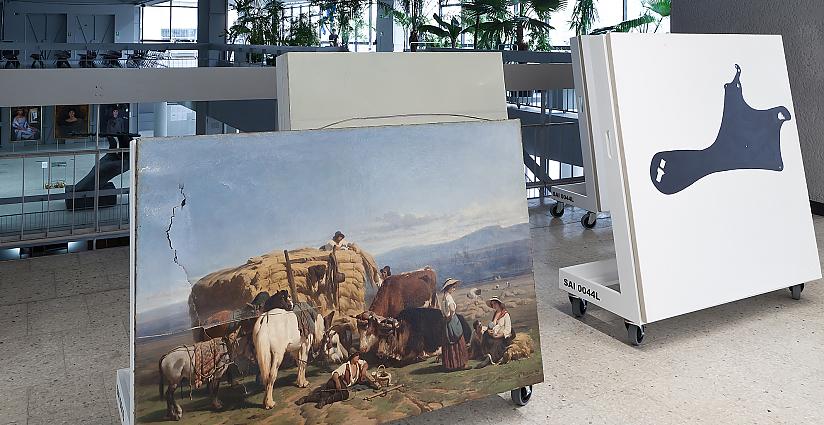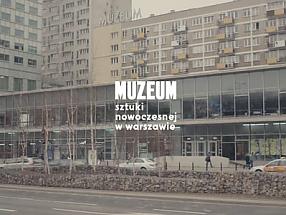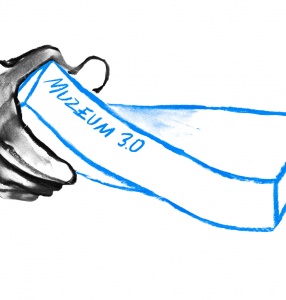Making Use
Life in Postartistic Times

The exhibition "Making Use: Life in Postartistic Times" is engaged with the various avenues that lead from the field of art to daily life and in the reverse direction—from life to art.
The so-called coefficient of art is present in high concentration in many realms of activity — it can be found in alternative economies, street protests, diversion advertising, food cooperatives and urban gardening, critical tourism, and the curricula of flying universities. In such cases, life is permeated by a sensibility that is characteristic of art: a conceptual surplus, thinking in terms of form, or endless games with imagination — political, economic, and scientific. It is not a new phenomenon, let alone a tendency or style in art.
The exhibition Making Use: Life in Postartistic Times addresses one of the fundamental postulates of twentieth-century avant-garde movements — the mutual penetration or even fusion of art and everyday life. The Polish art theorist Jerzy Ludwinski wrote in 1970s in his essay “Sztuka w epoce postartystycznej” [“Art in the Postartistic Times”], “It is highly likely that today we are no longer dealing with art. We simply overlooked the moment when it transformed into something entirely different, something that already escapes our capacity to name it. Beyond any doubt, what we are dealing with today has a greater potential.”
An engagement with the status and competences of the individuals and collectives who work with what has been thus described as the postartistic age animates this exhibition. In a world that requires a redefinition of the individual's obligations to the community and the new global challenges of migration, economic crisis, armed conflicts, and environmental threats — multifarious questions emerge. How can artistic competences achieve an impact on reality? Do they always have to materialize as artworks? What role can the museum play in a situation where art radiates to non-artistic environments, and in so doing, loses the characteristics that distinguish it as art?
The project "Making Use: Life in Postartistic Times" is indebted to three phenomena known from the history of twentieth century art which have remained topical and universal until the present day. The first consists in attempts to question the borders of art institutions with a view to enriching the everyday with poetic qualities or pursuing the goal of a radical social change. The second is the migration of artists from the field of art to other areas of reality: utopian communes, social political movements, social work — popular especially during the periods of social turbulence, such as the turn of the 1970s and the first decade of the twenty-first century. The third is the creation of new institutional environments beyond the scope of the traditional gallery and museum network and the art market.
The point of departure for this exhibition is the collective writings of the theorist Stephen Wright, who postulates a deconstruction of “conceptual edifices” that have provided the foundations of institutionalized art since the nineteenth century. As counter to this edifice, Wright proposes a model of art that implements its own potential — imagination-driven and conceptual — through the process of making use. Such postulates operate on a 1:1 scale, akin to a map that begins to overlap with the actual territory that it represents. Wright is looking for strength in the weakness of art; the theorist disputes Kantian “purposeful purposelessness”, the need to replicate existing systems, the rigours of ownership and authorship, and the haughtiness of so-called “expert” culture.
The exhibition "Making Use: Life in Postartistic Times" will develop over time, reaching its ultimate form on the closing date, May 1, 2016. The exhibition will feature reports about the activities of over seventy artists, collectives, social movements and patainstitutions from different parts of the globe: Aaron Burr Society, Adrian Kolarczyk, Andrzej Haręza, Anja Rüegsegger, ASMR / Anna, Arabian Street Artists / Heba Amin + Caram Kapp + Stone, At Work Collective, Biennale de Paris, Brandalism / Jonathan Barnbrook Studio, Brett Bloom, Brud, Bureau d'études, Carlos Espinosa Arancibia, Cecylia Malik, Center for Land Use Interpretation, Center for PostNatural History, Centrum, Chris Onesto, Chto Delat / Nikolay Oleynikov, Compass / Brian Holmes + Rozalinda Borcila, Contingent Movements Archive, Daniel Rycharski, Debtfair, e-flux, Estar(ser) / Order of the Third Bird, Electronic Disturbance Theatre/b.a.n.g. lab, Etcétera, Feral Trade / Kate Rich, Forensic Architecture / Charles Heller + Lorenzo Pezzani, Greenpeace Polska, The Guantanamo Bay Museum of Art and History, GULF Labor, Hugo Vidal, Iconoclasistas, Institute for Human Activities, Institute for Model Nations, Isola Art Center, Janez Janša + Janez Janša + Janez Janša, Jesper Alvaer, Joanna Rajkowska, Jonas Staal / New World Summit, Jerzy Ludwiński, Jerzy Rosołowicz, Kamila Szejnoch, Kein mensch ist illegal, Les UX., Liberate Tate, Loompanics Unlimited, Ludovic Chemarin ©, Luther Blissett, Manual Labours / Sophie Hope + Jenny Richards, Museum of American Art, Museum of Arte Útil, Muzeum Społeczne / Krzysztof Żwirblis, Myvillages / Company, N55, Niewidzialne Miasto, Ogród Botaniczny Uniwersytetu Warszawskiego, Omer Krieger, Peter von Tiesenhausen, Precarious Workers Brigade, Public Works, Raivo Puusemp, Reverend Billy & the Stop Shopping Choir, Robin Hood Minor Asset Management Cooperative, Rolling Jubilee Fund, Jewish Renaissance Movement in Poland, S.a.L.E Docks, Salvage Art Institute, San Precario, Shigeru Ban, Standing Man, Temporary Services, That's Painting, Third Text / Rasheed Araeen, Tools for Action, Włodzimierz Borowski, Zentrum für Politische Schönheit.
Curators
Sebastian Cichocki
Kuba Szreder
Curatorial co-operation
Stephen Wright
Research and production
Meagan Down
Szymon Maliborski
Szymon Żydek
Co-operation
Daniel Woźniak
Exhibition architecture
Maciej Siuda
with the team:
Agnieszka Wach
Katarzyna Dąbkowska
Rodrigo Garcia González
Graphic design
Krzysztof Pyda




